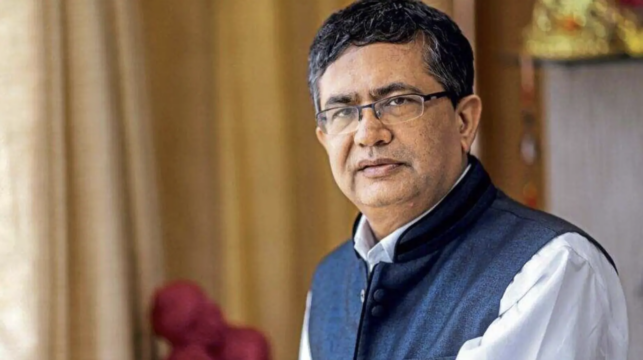India has gone from strength to strength in recent years, with events like the successful launch of Chandrayaan-3 firmly cementing the country’s position as the newest global superpower. India is predicted to become the world’s third-largest economy by 2027 and, in April 2023, was confirmed as the world’s most populous country.
Still, although British colonialism officially ended in 1920, escaping from the political, economic and social hangovers from this period has been a long and arduous journey. Yet the country’s recent economic boom is helping to accelerate these positive developments and bring benefits to the wider population. For example, India’s poverty rate continues to fall, from 14.72% in 2020 down to 11.9% in 2021.
Going forward, India’s rapid economic expansion looks set to continue. India’s GDP growth rate is forecast at 6.9% in 2023-24 and experts suggest that a robust stock market performance, continued infrastructure investment and a highly resourceful workforce are the driving forces behind this trend.

A robust stock market
India’s stock market is in solid shape, expected to rise over 10% by the end of 2024. As such it’s increasingly attracting the attention of international investors who are keen to get involved in the country’s upward momentum.
Yet much of the growth can be attributed to India’s own population. The COVID-19 pandemic helped to usher in a new generation of local investors for India’s stock market. In the first nine months of 2020 there were 5 million new demat accounts, compared to 10 million new accounts that were opened in the last 5 years and of these accounts, Indian millennials made up a large majority.
But this phenomenon is more interesting when we remember that much of the population has lived under the poverty line until very recently.
“Imagine a country with $2,500 dollars per capita income, which is one of the poorest in terms of per capita income. How do poor people invest in other poor people’s companies?” asked Ashish Chauhan, the CEO of the National Stock Exchange of India at the recent Horasis India Meeting in Adelaide, Australia.
Yet despite these demographics having less per capita income, it can’t be ignored that India’s people are a driving force for its stock market. Earlier in October Chauhan mentioned that there’s been a surge in investments coming from lower-income households. This highlights a change in how the less affluent are allocating their money, increasingly backing startups and small businesses founded by people they believe in, a sentiment further explained at the Horasis meeting.
“We are now 82.5 million unique investors directly investing in Indian stock markets. Almost 18% of all households in India directly invest in stock markets, that tells you the power of what’s happening,” he explained.
In this way, the country is benefitting from a virtuous cycle of investment which uplifts the fortunes of the population and the wider economy.
Infrastructure investments continue
On another note, infrastructure investment has played another central role in India’s economic development. The government has sponsored a number of landmark projects that have helped to incentivize growth and offer the population numerous opportunities.
“Global GDP has fallen, India’s GDP has remained flat. When inflation strikes in poor nations it always affects poor people more than rich people and so high inflation should have affected India very badly but we’ve actually outperformed,” Arvind Uppal, Non-Executive Chairman of Whirlpool India, explained at the Horasis meeting.

2023 has been a tumultuous year for most economies and, when high inflation hits, it’s usually the poorest who feel the biggest impact. Uppal believes the secret to India’s success amidst the turmoil is directly linked to the government’s infrastructure investments.
One example of this can be found with The National Infrastructure Pipeline, introduced in 2019. The program prioritizes social and infrastructure initiatives, including energy, railways and roads and urban development projects. In addition, the government has tripled spending on infrastructure in 2023 emphasizing the desire to improve India’s logistics network.
According to analytics firm CRISIL, India’s infrastructure investments are expected to reach Rs 143 trillion between the financial years 2024 and 2030. This represents over double the Rs 67 trillion that was invested in infrastructure over the previous seven financial years. The significant increase confirms India’s focus on expanding and upgrading critical infrastructure to support continued economic growth.
“What has been driving economic growth is the huge amount of infrastructure spending that’s been going on by the government. If that hadn’t happened, then the bottom of the pyramid would be suffering from inflation rates,” Uppal concluded.
A rising demand for labor, materials, and infrastructure capital expenditures have all driven faster industrial growth. For example, rural internet subscriptions have surged by 200% between 2015 and 2021, outpacing the 158% growth rate seen in urban areas over the same period. This narrowing gap highlights that rural connectivity is rapidly catching up to urban standards. The accelerating growth in rural internet access demonstrates increased digital inclusion of India’s villages and rural communities. Also, according to studies by the Reserve Bank of India and National Institute of Public Finance and Policy, every rupee invested in infrastructure has a multiplier effect, generating 2.5 to 3.5 rupees of gain in GDP.
This strong correlation highlights how public and private investment in roads, ports, energy systems and other critical infrastructure incites for broader economic expansion by facilitating commerce and creating jobs.
A newly engaged workforce
More employment opportunities have led to more consumer purchasing power as demonstrated by the aforementioned uptick in lower-income consumers moving towards stock investments.
From April to June this year, the unemployment rate was 6.6% compared to 7.6% in the same quarter in 2022 and it is expected to continue declining. Additionally, the percentage of Indians relying on self-employment as their main occupation rose to 57.3 percent up from 55.8 percent the previous year including those small business owners. This indicates increased entrepreneurship and economic activity outside of traditional salaried jobs.
Overall, the combination of multiple forces coming together have led to the exponential growth of India’s economy. The government’s substantial infrastructure spending has opened new opportunities for employment. Increased private participation in the thriving stock market demonstrates growing prosperity and appetite for investment among Indian households. All within a context of technological demand, development and progress that continues to elevate India’s capabilities. In addition, greater domestic consumption, capital formation, and integration into the world economy add to the strong development trajectory of Asia’s third-largest economy.












